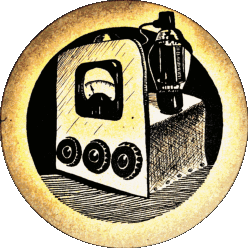Some time ago digging the web for information on The Radio Club of Hartford, I came across this article in QST magazine (September issue, 1921). In a nutshell, it is about a QRP contest as it should be - "Do More With Less" and then measure how big this "More" is and how much spare "Less" were used. I read this article briefly: something about some kind of reward, some competitions, the names - not very exciting at first sight, but one remarkable thing caught my attention - The Winner, transmitter that won a first prize. This TX has turned my stereotypes upside down (once again): how should it work? where is a rectifier? grounded plate tank? keying the grid-leak?? I have to investigate, or even better - to make my own, based on this article, design and run such a prehistoric radio on the air!
So, is that contest over? I do not think so, not yet, not for me..
The Radio Club of Hartford (affiliated) recently conducted a very interesting contest in the building of C.W. sets. Several months ago the rules were drawn up and about a dozen members entered. The idea was to devise a simple inexpensive C.W. set of low power, preferably operating from 110 volt lighting current, to supersede the spark coil in the small stations about town. The sharper wave and greater distance with reduced interference made this very desirable, and the Radio Club of Hartford is to be commended for instituting steps that can well be followed by other cities in the reduction of QRM.
One of the members of the club offered a silver loving cup as a grand prize, and in addition there were five 5-watt power tubes offered by the club. The rules called for the award of the prizes to the men having the highest scores on the following basis:
| Overall electrical efficiency | 50% |
| Workmanship | 20% |
| Ingenuity in construction | 15% |
| Economy in cost | 15% |
| 100% |
The awards were made at the final meeting of the club before closing for the summer, and eight contestants were on hand with their sets. These were of every imaginable description, but mostly following the general idea of a small base bearing a vertical panel carrying the controls, with the apparatus behind.
Considerable ingenuity was displayed in the source of power. Several of the sets used step-down ("toy") transformers on the 110 volt supply, the low potential current thus obtained being used both to light the filament and to operate a spark coil with regular interrupter, the secondary voltage of which was dropped by a shunt condenser and then fed to the plate of the tube. These sets of course would operate from a storage battery equally well.
It was a condition of the contest that the operating wave length should not exceed 200 meters, and thru faulty design only two sets were able to achieve this - those submitted by J. C. Randall, 1ANQ, Dist. Supt., and F. H. Schnell, 1MO, our Traffic Manager, who is incidentally vice president of the club. Both of these sets, however, were able to get down to 180 meters, altho readings were taken at 200. A phantom antenna was used, consisting of a 12-ohm resistance and a mica condenser of .0005 mfd. capacity, in series with a Jewell thermo-couple ammeter.






